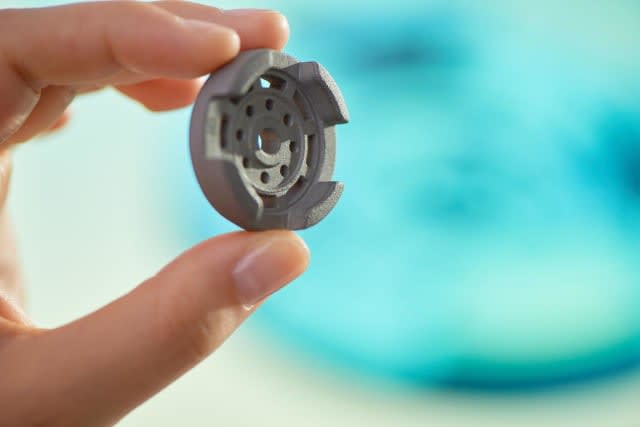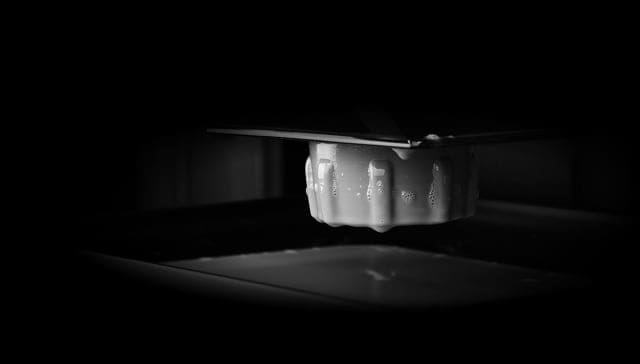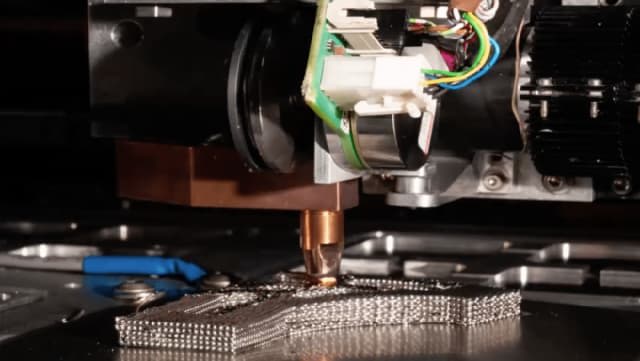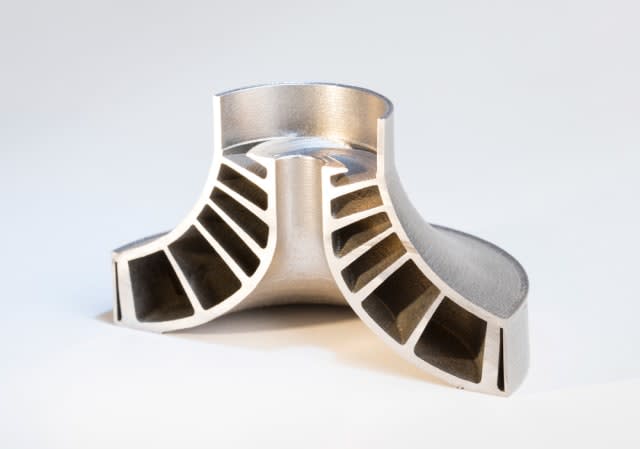Despite the complex political, social and environmental events that have transpired over the course of 2018, the 3D printing industry keeps transforming at a steady pace. Predictions made about the ability of the technology to meet business needs for mass production are ultimately coming true, which explains why six of the top 3D printing stories from this year involve mass manufacturing.
HP’s Metal Jet 3D Printing
Many in the industry have been waiting for metal 3D printing to become less expensive and easier to use, without issues related to repeatability. HP hopes to answer those needs with Metal Jet 3D Printing, which it announced at IMTS this year. Like many of the newer metal 3D printing processes, Metal Jet takes a cue from the metal injection molding (MIM) industry, printing green objects that are subsequently sintered in a furnace.
|
|

Metal Jet uses the same deposition technology found in HP’s Multi Jet Fusion (MJF) technology to 3D print a binder onto a bed of metal powder. It does so with a speed that makes printing batches of up to 50,000 parts more cost-effective than MIM.
The company has a roadmap planned out that already includes a number of interesting customers, including Volkswagen (emissions scandal be damned), Johnson & Johnson (asbestos scandal be damned) and GKN, an important industrial parts manufacturer.
Evolve Additive
Evolve Additive is also in the business of mass additive manufacturing, except with polymers instead of metals. The company was spun out of Stratasys’ research and development program once it had developed its selective toner electrophotographic process (STEP) to a mature state. With STEP, a roller is electrostatically charged and then moved over a polymer powder. The powder is transferred to a conveyor belt, carried to a build area, and fused with the layers below.
Evolve claims that STEP is 50 times faster than the fastest 3D printing technology available, high speed sintering. STEP also requires minimal post-processing, aside from support structure removal using water. Printed components are also said to be isotropic, giving STEP a big advantage over the competition.
Altogether, this primes STEP to be competitive with injection molding at runs of between five and twenty thousand parts, except that injection molding can’t perform mass customization. STEP will also feature real-time monitoring, and could eventually include color and multi-material 3D printing. Other possibilities for the technology include the ability to print with multiple materials and colors.
Alpha machines are already in the field and beta machines will be shipped in 2019, followed by full commercialization in 2020.
BASF
While it might not be quite as big as GE in terms of revenue or number of employees, the world’s largest chemical company, BASF, has continued to grow in the 3D printing space. This year saw the company make a number of moves in the industry, from investing $25 million in Materialise to acquiring two material manufacturers.
The Materialise deal will see the German chemical giant lend its expertise in material development to the 3D printing software maker and service provider. In return, Materialise can provide its knowledge of AM systems. And because BASF is connected to very large manufacturers, Materialise may gain greater access to that customer base. Altogether, this should increase the adoption of 3D printing overall.
Meanwhile, the acquisition of Advanc3D Materials and Setup Performance SA will give BASF more selective laser sintering powders, as Advanc3D works with Setup Performance to produce those materials.
BASF also participated in the development of BigRep’s new MXT Extrusion Technology, which separates filament feeding to the extruder and the actual extrusion itself, resulting in greater printing speeds.
Additionally, BASF has signed a deal with UK-based Photocentric, one of the few photopolymer resin manufacturers to develop large-scale resin-based 3D printing technology. Uniquely, Photocentric has developed materials that are curable when exposed to white light. The systems to be developed with Photocentric will have large build volumes and will 3D print materials using HDTVs and/or mobile phone screens laid out in a single build platform.
BASF is also working with Origin, discussed in greater detail below, to create materials that will work with the company’s new mass 3D printing platform.
Origin
Origin emerged from stealth at this year’s formnext event, where attendees were given only a taste of what was to come. In an exclusive interview with engineering.com, Origin CEO Chris Prucha went into more detail about how the company’s programmable photopolymerization (P3) technology works.

P3 does not rely on oxygen for 3D printing photopolymer materials, opening the process up to a wider variety of materials, including polyolefins. Through an open material API, Origin believes that more material makers will be able to develop plastics that work with the P3 process.
The system, which will be showcased at RAPID 2019, is modular, which means that multiple printing units can be connected using the company’s magnetic kinematic system to create a fleet. It also means that new hardware modules can be added, such as those that may be devoted to quality control, automation or post-processing.
Digital Alloys
Boston-based Digital Alloys has received $17.9 million in funding to develop a new form of metal 3D printing that is faster, less expensive, and more reliable than traditional metal 3D printing systems. The startup dubs its process “joule 3D printing,” which uses resistive heating to melt inexpensive, widely available metal wire.

Because during this process the current is inside the wire, where it is heated from within, the wire is heated instantly at a low power, speeding up the printing process. At the same time, it’s possible to enact closed-loop control because the amount of power being used to heat the wire is easily determined with a built-in electric circuit. This, in addition to the precision wire feed system, allows the system to know exactly how much energy is used to deposit how much material.
Other benefits include the ability to print objects with 99.5 percent density or greater; fine detail that is dependent on the diameter of the wire used, ranging from 250 microns to 1mm; and the ability to print 45-degree overhangs without supports.
Velo3D
Where Digital Alloys has swapped out the powder bed for a technology that is more easily controllable, Velo3D has opted to learn how to control every variable in powder bed fusion with ultimate precision. The company has developed what it calls “Intelligent Fusion,” which combines software and hardware to reliably and repeatably print objects that require almost no support structures.

Velo3D’s Flow software first pre-distorts a CAD file to compensate for deformation that will occur during the print process, kicking first print success rates up to 90 percent and reducing support volume by 3 to 5 times. When these files are printed on the company’s Sapphire 3D printer, reliability and repeatability are ensured through active closed-loop control. As the print is being performed, the system accounts for variability and continually adjusts the print parameters to provide a stable print environment.
Also necessary to account for the many variables within the print chamber are the ability to precisely control the oxygen levels and a “zero contact” recoater, which prevents metal powder particles from being disturbed during the printing process.
Deduce what you will from all of these stories from 2018, but one thing that is clear is that mass manufacturing with 3D printing is becoming a reality. While 2017 saw companies already beginning to use HP’s MJF to mass produce parts, we can now see that HP won’t be alone in the business when it comes to 3D printing either plastics or metal. A slew of new companies have joined the race to transform 3D printing and, therefore, manufacturing as a whole.
